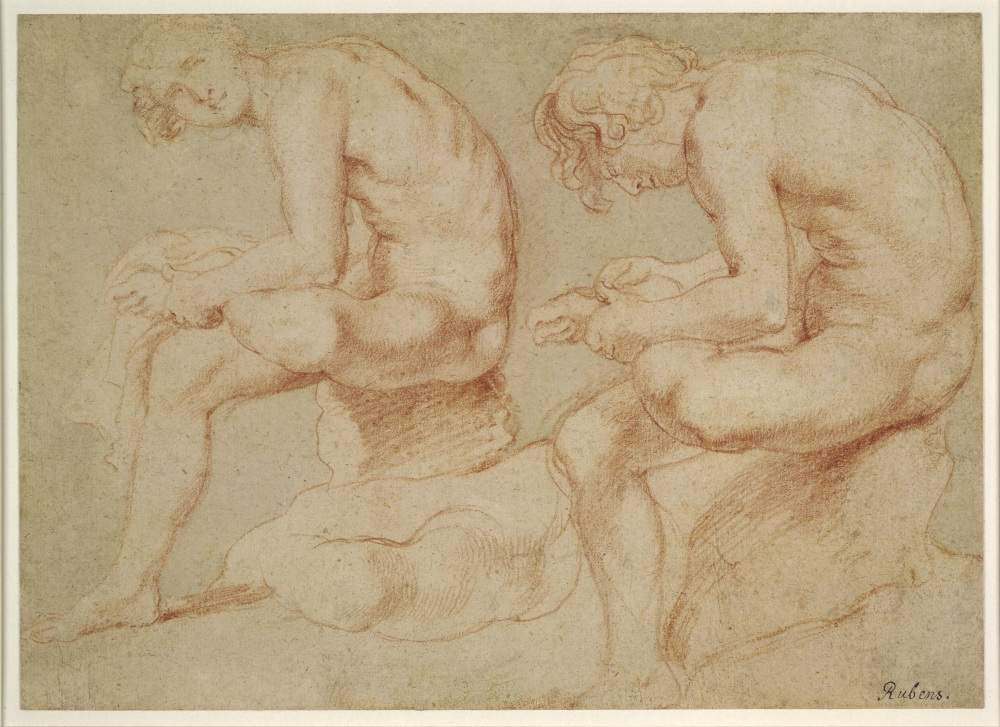An exhibition at the Borghese Gallery reflects on the relationship between Rubens and ancient sculpture
The Galleria Borghese presents from November 14, 2023 to February 18, 2024 the exhibition The Touch of Pygmalion. Rubens and Sculpture in Rome, curated by Francesca Cappelletti and Lucia Simonato, which is part of the larger project entitled Rubens! The Birth of a European Painting realized in collaboration with Fondazione Palazzo Te and Palazzo Ducale in Mantua.
The Roman exhibition displays nearly fifty works from some of the world’s most important museums, including the British Museum, the Louvre, the Metropolitan Museum in New York, the Morgan Library, the National Gallery in London, the National Gallery in Washington, the Prado Museum, and the Rijksmuseum in Amsterdam. Divided into eight sections, the exhibition aims to highlight Rubens’s extraordinary contribution, at the threshold of the Baroque, to a new conception of the antique and of the concepts of natural and imitation, focusing on the novelty of his style and how the study of models constitutes a further possibility for a new world of images. For this reason, the exhibition takes into account not only the Italian works that document his passionate and free study of ancient examples, but also his ability to reread Renaissance examples and engage with contemporaries to explore new aspects and genres.
During the seventeenth century Rubens is considered by his contemporaries to be one of the greatest connoisseurs of Roman antiquities. Rubens enacts in stories the process of vivifying the subject he uses in portraiture. In this way marbles, reliefs, and famous examples of Renaissance painting come out enlivened by his brush, as do the vestiges of the ancient world. One example is the famous statue of the Spinario, which Rubens draws, in sanguine, and then with red charcoal, taking the pose from two different viewpoints. The drawing seems to be executed from a living model instead of a statue, so much so that some scholars imagine that the painter used a boy posed like the sculpture. The presence in the city of painters and sculptors who had trained with him in Antwerp, such as Van Dyck and Georg Petel, or who had come into contact with his works in the course of their training, ensured the accessibility of his models to a generation of Italian artists now accustomed to confronting the antique in the light of contemporary pictorial examples and on the basis of a renewed study of nature. Among all, Bernini: his Bourgeois groups, made in the 1920s, reread famous ancient statues, such as the Apollo of Belvedere, to give them movement and translated marble into flesh, as in the Rape of Proserpine.
“In this challenge between the two arts, Rubens had to appear to Bernini as the champion of an extreme pictorial language with which to compare himself : for the intense study of nature and for the depiction of motion and ’horses in levade’ suggested by the vincian graphics, which would also be tackled by the Neapolitan sculptor in his senile marbles with the same Leonardoesque ’fury of the brush’ recognized by Bellori to the Antwerp master; finally also for his portraits, where the effigy seeks dialogue with the viewer, just as will happen in Bernini’s busts for which the felicitous expression of speaking likeness was coined,” said curator Lucia Simonato.
The exhibition aims to illuminate the controversial relationship between Bernini’s masterpieces and Rubensian naturalism, just as were other early sculptures by the artist, such as the Vatican Charity in the Tomb of Urban VIII, already judged by European travelers in the late 18th century to be ’a Flemish nanny.’ In this figurative context, the timely circulation of prints, taken from Rubensian graphic proofs, accelerated the dialogue throughout the 1730s by prompting publishing operations such as the Galleria Giustiniana, where ancient statues now definitively came to life, in accordance with an effect already dubbed Pygmalion by critics.
“A magnet for Northern European artists since the sixteenth century, Rubens’ Rome, between the Aldobrandini and Borghese pontificates, is the place to study the antique again, whose masterpieces of painting are beginning to be known, with the portrayal in 1601 of the Aldobrandini Wedding,” said Francesca Cappelletti, director of the Borghese Gallery and curator of the exhibition. “This is the moment of Annibale Carracci’s Farnese Gallery and Caravaggio’s Contarelli Chapel, of which a generation is stunned. Through the eyes of a young foreign painter like Peter Paul Rubens we look once again at the experience of elsewhere, we try to reconstruct the role of collecting, and of the Borghese collection in particular, as the engine of the new language of European naturalism, which unites the research of painters and sculptors in the first decades of the century.”
Image: Pieter Paul Rubens, Two Studies of a Boy from the Spinario (1601-1602; red chalk on paper, 26.1 x 36 cm, London, British Museum) © The Trustees of the British Museum
 |
| An exhibition at the Borghese Gallery reflects on the relationship between Rubens and ancient sculpture |
Warning: the translation into English of the original Italian article was created using automatic tools. We undertake to review all articles, but we do not guarantee the total absence of inaccuracies in the translation due to the program. You can find the original by clicking on the ITA button. If you find any mistake,please contact us.





























